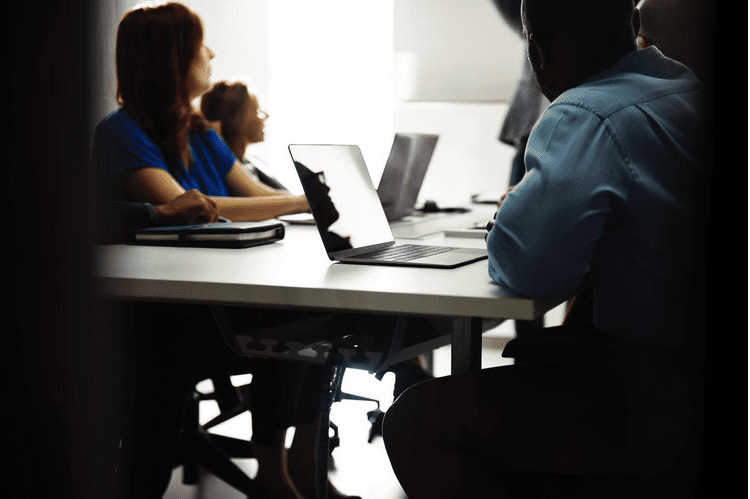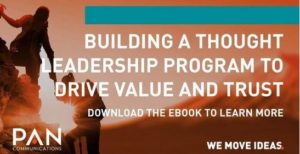When done correctly, a press tour can be a unique opportunity to leverage situations, locations and personal interactions to gain both short- and long-term gains in the form of extensive coverage and established relationships. The success of the press tour is reliant on not only the media outreach/briefings secured but the championing of logistics. Every step must be well thought out and planned as well as strategic, emphasizing efficiency and upholding professionalism.
In our 20+ years working closely with clients across B2B technology and healthcare, we’ve learned a lot—both what to do and what not to do. Based on our experience, here are 10 things to consider to ensure your next press tour is smooth and effective.
1. Define the news driver and purpose. What are you trying to achieve with the tour? Whether it is visibility for the CEO or awareness in your target market, define early the trip’s intent and expectations to both the executive and communications teams. This will ensure everyone is clear on purpose and outcomes.
2. Location, location, location. What’s the best market for your press tour? Is that location dictated by an event? Is there a conference or is your client traveling for meetings? Be opportunistic to leverage executive availability and travel from a media perspective. If given the chance to suggest a location for the press tour, once again be strategic and look at factors like company goals, news drivers and contacts.
3. Form targeted list. Align your list with the goal of your press tour and select targets with a purpose. Make sure the reporters you contact will be interested in the news driver you define and “understand what the journalist’s goals are for the content.” With that said, do not limit yourself because opportunities can come from anywhere.
4. Get availability. As early as possible solidify an agenda, location and plans. Lock down the travel schedule, which is easier said than done, but doing so will allow you to utilize every last second. For example, the CEO at one of our clients, an emotional-intelligence software company, was looking for funding and planned a trip to San Francisco for a conference. Using the conference as our driver, we were able to book interviews with reporters to increase that CEO’s visibility and company profile ahead of funding efforts.
5. Leverage your assets. With that same client, we had a unique opportunity where both the CEO and one of the client’s customers were traveling to San Francisco together. We were able to secure a speaking opportunity for their customer at the conference to amplify our client’s success. Knowing that they would be there at the same time, we pitched joint interviews to the media – leveraging company growth and case studies to enhance the reporters experience and understanding. That’s just one example. Don’t forget about new products or offerings, recent corporate milestones, customer wins or successes, and unique partnerships, to name a few. All of these are assets that you can use to interest media in speaking with executives/spokespersons.
6. Demos are key. What can you get in person that you can’t over the phone? What can you show reporters that you can’t digitally? Firsthand interactions with products will give reporters a deeper understanding and more personal connection to the content you’re discussing.
7. Do not forget broadcast. Even if you can’t identify a news driver, breaking news can provide a platform to drive your tour. Use your client’s physical presence in the area as an opportunity for off-the-cuff broadcast stories. Make local broadcast outlets aware of your brand and their availability to comment on timely stories.
8. Utilize all possible time. Phone interviews eliminate any excuse of time or place that either party can’t make. Car rides are the perfect quite time for your client to hop on the phone with a reporter. Even the airport café can be the perfect spot to squeeze in one last in-person briefing.
9. Reconnect with old contacts. If you’re traveling to a different location, use the trip to meet up with reporters you may have only worked with digitally. Make that in-person connection and use it as an angle to introduce the reporter to current company news.
10. Prepare, Prepare and Prepare some more. Make sure the spokesperson is prepared for each and every interview with separate briefing materials. There should be a distinct angle for each reporter, to not only target the reporter’s interests but to keep the conversation fresh and engaging. Help the reporter help you, by giving them a story they can use … and, if the meeting is a relationship-building opportunity, don’t forget to ask the reporter what stories s/he is working on in the coming months and/or propose several ideas based on current topics you see trending from your POV.
After planning a strategic and logistically sound press tour using these 10 tips, you are ready to execute. Unpreparedness is readily apparent to everyone, so put your best foot forward by crossing all of your T’s and dotting all of your I’s. The executives/spokespersons will thank you, the reporter will appreciate it and the coverage (and longer-term relationships) will reflect it. Need help planning your next media tour? Give us a call, we’d love to partner with you!
New to in person briefings and building media relationships? Check out 5 Tips for Getting Your Media Game Face On.




